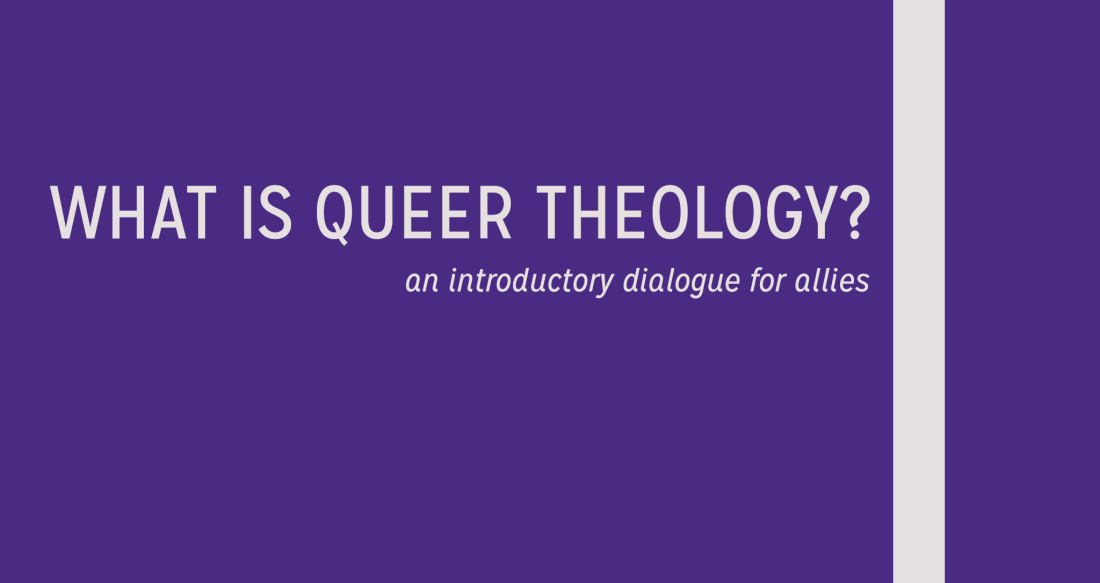
This is PART 4 of a 5 Part Series entitled, “What is Queer Theology?” These series of blog posts make up my final project for a class at the Graduate Theological Union entitled “Queering Ecclesiology and Rites,” taught by Dr. Hugo Córdova Quero, Visiting Associate Professor of Critical Theories and Queer Theologies & Director of Online Education at Starr King School for the Ministry in Berkeley. In this series I hope to explore the incredible scholarship and possibilities around queer theology in a non-academic format. These posts are intended for allies of LGBTQ+ who have a basic familiarity with Christianity, with the hope that this introductory dialogue will spark curiosity and further study amongst Christian communities.
Part 4: Queer Rites and Sacraments
Up to this point, we have examined in detail the history and development of queer theology, we have highlighted the importance of centering voices of color from around the globe, and we have looked at a couple of specific examples of churches engaging with queer theology within their church community in a global context.
For allies, the question remains how we might make a church of radical inclusion here in the United States. There may even be a question of if our liturgies, prayers, worship songs, etc. need to have a separate space for queer liturgy, whether the liturgy – even in the places where the language is patriarchal and heteronormative – should remain as is, or if there is another imaginative answer altogether.
Before we move too far into this space, here are some reminders to keep in mind:
- We are primarily allies, not leaders, in this quest for liberation and solidarity. Our influence and leadership comes from admitting our privilege, owning our shortcomings, and acknowledging where we don’t have the answers.
- Queer and transgender people, those of color in particular, owe us nothing. Being inclusive is not a strategy for church growth, it is an essential expression of Christianity.
- If I have not been redundant enough on this point already, CENTER VOICES OF COLOR. CENTER QUEER AND TRANSGENDER VOICES OF COLOR. CENTER QUEER AND TRANSGENDER VOICES OF COLOR FROM AROUND THE GLOBE. There is a difference between making space for these voices and tokenizing these voices. Tokenizing means that we are advertising that we are inclusive for the sake of church growth, or parading that we have a “queer friend.” Genuinely making space might look like giving up the pulpit for an entire series to listen to other’s voices. It may mean intentionally hiring non-white and non-straight leadership for ministerial positions. It might mean hosting panels and teach-ins. Making space could look like a lot of things, but it always allows queer and transgender voices to articulate what liberation and justice looks like for them on their terms, not ours.
- Once we have surrendered the right to OWN space, we understand that the liturgy, which is literally “the work that the people do,” is not ours either – but is the people’s worship.
Some Ideas
In class, the Rev. Dr. Joseph N. Goh gave us an example of what a queer liturgy may look like. In it, both the body, our lived experiences, and our cultural connections (in this case, the food of the eucharist) were all lifted up in ways perhaps unexpected for a Christian church. Some churches have wrestled with gender-inclusive pronouns describing God and the Trinity. I have even heard parishioners refer to the Holy Spirit as “She” during prayers.
The essential struggle for allies to understand is that, like everything else we have explored within queer theology, the answer here might depend on who is coming to your table or parish. For some ministries, expanding the marriage rites for inclusive language is enough. For some churchgoers, the need to de-gender God is absolutely essential in order to worship Them. For some, the beautiful mystery of worship within the liturgy itself is “queer” enough, to where some of the archaic gendered language is tolerable.
It is the work of queer theology to question the presumptions that go into liturgy, and toward the end of the semester we learned that this field of study is slowly being expanded. For us as allies, it is our work to listen and accommodate where we can.